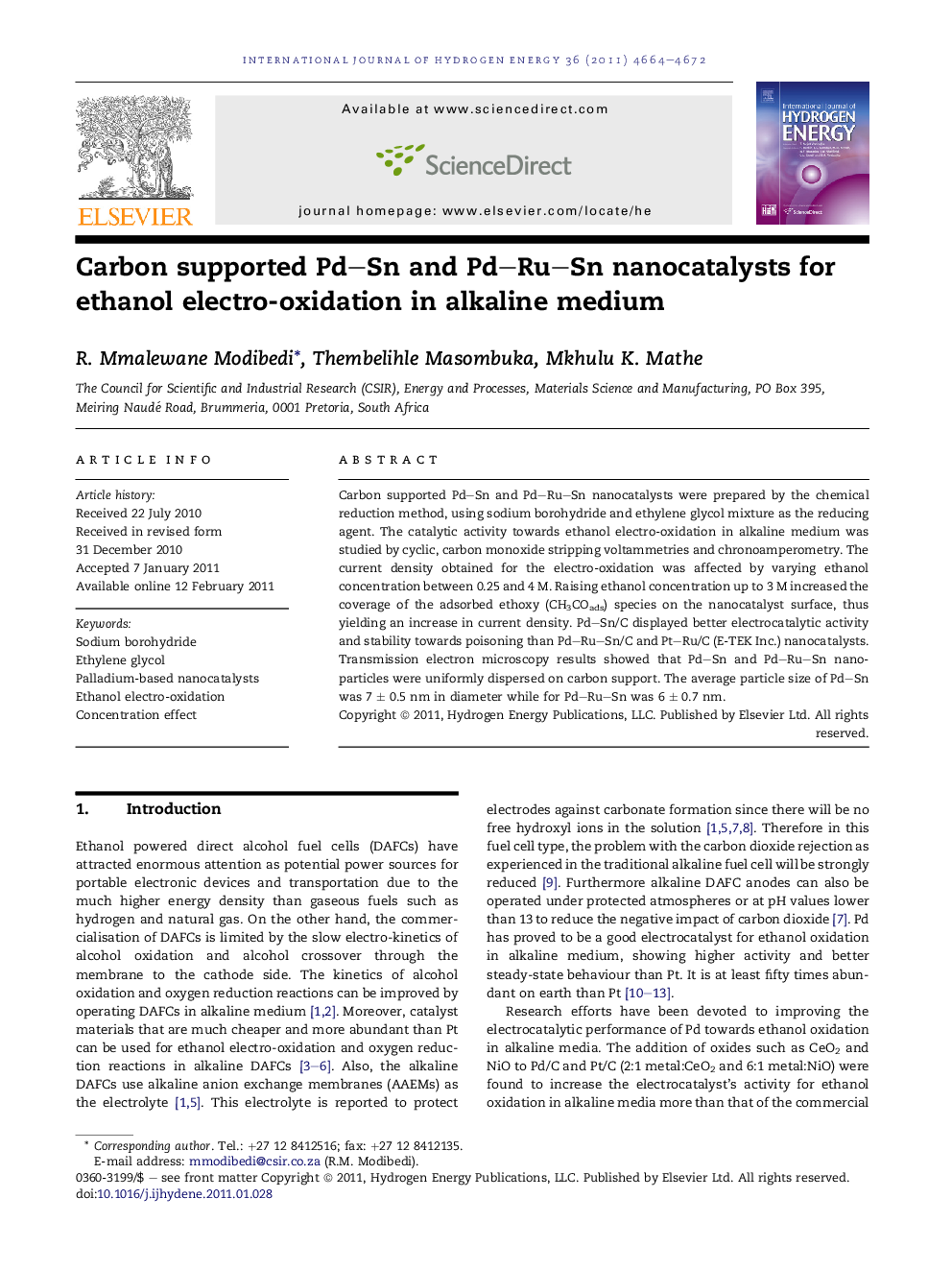| Article ID | Journal | Published Year | Pages | File Type |
|---|---|---|---|---|
| 1279773 | International Journal of Hydrogen Energy | 2011 | 9 Pages |
Carbon supported Pd–Sn and Pd–Ru–Sn nanocatalysts were prepared by the chemical reduction method, using sodium borohydride and ethylene glycol mixture as the reducing agent. The catalytic activity towards ethanol electro-oxidation in alkaline medium was studied by cyclic, carbon monoxide stripping voltammetries and chronoamperometry. The current density obtained for the electro-oxidation was affected by varying ethanol concentration between 0.25 and 4 M. Raising ethanol concentration up to 3 M increased the coverage of the adsorbed ethoxy (CH3COads) species on the nanocatalyst surface, thus yielding an increase in current density. Pd–Sn/C displayed better electrocatalytic activity and stability towards poisoning than Pd–Ru–Sn/C and Pt–Ru/C (E-TEK Inc.) nanocatalysts. Transmission electron microscopy results showed that Pd–Sn and Pd–Ru–Sn nanoparticles were uniformly dispersed on carbon support. The average particle size of Pd–Sn was 7 ± 0.5 nm in diameter while for Pd–Ru–Sn was 6 ± 0.7 nm.
► Pd–Sn and Pd–Ru–Sn nanocatalyst were reduced by (NaBH4 + ethylene glycol) mixture. ► Pd–Ru–Sn/C (co-reduction) showed a lower performance than Pd–Ru–Sn/C (Pd+Ru–Sn/C). ► Varying ethanol concentration was found to affect the current density. ► Pd–Sn/C displayed better electrochemical activity and stability than Pd–Ru–Sn/C. ► The average particle size for Pd–Sn/C is 7 ± 0.5 nm.
